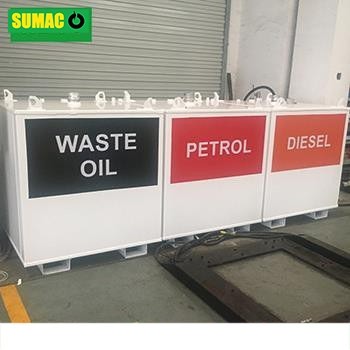Introduction
Fuel tank installation is a critical process for ensuring safe fuel storage and efficient fuel delivery systems. Whether you are setting up a fuel tank for residential heating, industrial use, or commercial fueling stations, proper installation is essential to meet safety regulations, environmental standards, and operational efficiency.
In this guide, we’ll cover installation requirements, safety considerations, step-by-step procedures, and maintenance tips for fuel tank systems.

1. Understanding Fuel Tank Types
Before beginning the installation, it’s important to choose the right fuel tank based on your application:
-
Above-Ground Storage Tanks (ASTs) – Easier to install, maintain, and inspect. Commonly used for small to medium-scale applications.
-
Underground Storage Tanks (USTs) – Space-saving and protected from external damage, but require more complex installation and monitoring.
-
Portable Fuel Tanks – Ideal for mobile operations, such as construction sites and agricultural equipment fueling.
2. Regulatory Compliance
Fuel tank installation must comply with local building codes, fire safety regulations, and environmental laws. Key regulatory points include:
-
Compliance with EPA (Environmental Protection Agency) and NFPA (National Fire Protection Association) standards.
-
Spill prevention measures, such as secondary containment and leak detection systems.
-
Proper venting and grounding to avoid static electricity hazards.
3. Site Preparation
Proper site preparation ensures safety and long-term reliability:
-
Foundation Assessment – Choose a stable, level surface for above-ground tanks or properly excavated area for underground tanks.
-
Distance Requirements – Maintain safe clearance from buildings, ignition sources, and property lines.
-
Environmental Protection – Install spill containment pads or bund walls to prevent soil and groundwater contamination.
4. Step-by-Step Fuel Tank Installation Process
Step 1 – Planning & Permitting
-
Obtain necessary permits from local authorities.
-
Finalize tank size, type, and location according to operational needs.
Step 2 – Base & Support Installation
-
For ASTs: Install a reinforced concrete pad or steel frame supports.
-
For USTs: Excavate the site and lay a sand or gravel bedding for tank stability.
Step 3 – Tank Placement
-
Use certified lifting equipment to position the tank securely.
-
Ensure proper alignment and structural stability.
Step 4 – Piping & Connection
-
Install inlet, outlet, and vent pipes according to manufacturer specifications.
-
Fit anti-siphon valves and leak-proof connectors.
Step 5 – Safety & Monitoring Systems
-
Add overfill protection devices and automatic shut-off systems.
-
Install leak detection sensors for early warning.
Step 6 – Inspection & Testing
-
Perform hydrostatic or pneumatic tests to check for leaks.
-
Ensure compliance with pressure ratings and capacity limits.
5. Maintenance Tips for Fuel Tanks
To extend the lifespan of your fuel tank and avoid costly repairs:
-
Inspect tanks regularly for corrosion, leaks, or damage.
-
Test leak detection systems at least once a year.
-
Clean and remove sludge buildup periodically.
-
Keep records of maintenance and inspections for compliance.
6. Common Installation Mistakes to Avoid
-
Skipping regulatory approvals.
-
Using improper foundations or inadequate supports.
-
Neglecting proper venting and grounding systems.
-
Overlooking regular inspection after installation.
Conclusion
A professional fuel tank installation not only ensures regulatory compliance but also guarantees safety, efficiency, and long-term operational reliability. Whether for residential, commercial, or industrial use, following proper installation steps and maintenance practices is essential for optimal performance.
